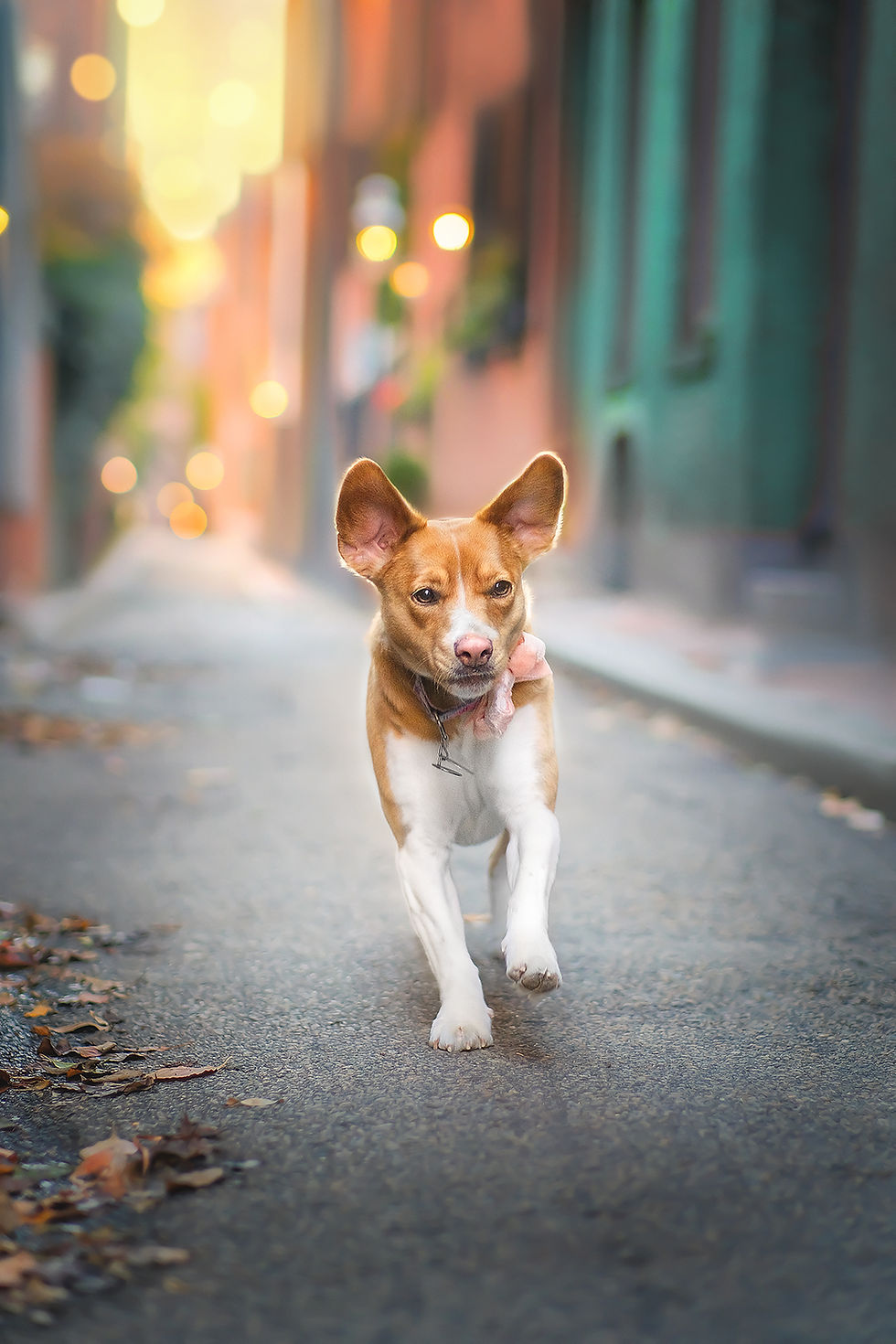Is a 50mm lens suitable for dog portraits?
- Jane

- Feb 7, 2023
- 2 min read
Updated: May 27, 2024

Have you ever noticed that almost all professional animal photographers use 135 mm or 85 mm lenses for dog portraits? Some of them also use 16 mm to create additional distortion, but I’m not a fan of such images.
Anyway, all the mentioned lenses, including 16 mm, are expensive when we are talking about versions with a maximum aperture of at least 1.8. It is a problem for “newborn” animal photographers with no budget. If you recognize yourself, read this post because I will show you what you can buy instead.
Believe it or not, one of the most popular questions people ask during individual photo editing lessons is how do you create such bokeh? What Photoshop functions do you use? The answer is quite demotivating because I use a 135 mm 1.8 lens to blur backgrounds, and there is no Photoshop at all.
Does it mean that you have to forget about these wow-looking portraits? No, it doesn’t. Traditionally the cheapest high aperture lens is a 50-55 mm one with a maximum aperture of 1.8-1.2. But professional photographers rarely use this type of lens because it’s considered “halfway” between the classical portrait lens and a wide-angle lens. As s result it’s neither perfect for portraits nor landscapes.
But I think that if your budget is tight, 50-55mm is a good option. For example, 55 mm 1.8 and 135 mm 1.8 for Sony cost 2100 vs 1000, respectively. For the other brands, the difference is approximately the same.
As you’ve probably guessed, this portrait of Chester is taken with a 50 mm lens, 50 mm 1.4 to be precise. So, what is the difference between, let’s say, 135 mm and 50 mm:
- 50 mm gives moderate distortion when talking about close-up portraits. The proportions of the dog will be worse than with the use of 135 mm (bigger nose, smaller body, etc.), so don’t come too close to the dog. The closer you come to the dog, the worse proportions you will get.
- If you try to use 50 mm for main shots, you’ll face insufficient angle of view and lack of background blur. That’s why it’s better to use it for closer portraits (but not too close)
However, for a medium portrait, you will not notice any significant difference from longer focus lenses. It doesn’t mean that there is no difference at all, but it means that 50 mm is worth its price. And when you are a real pro, you will buy 85, 135, 16, 35, or even 70-200, you know…
Dear colleagues, what do you think about 50 mm? Do you use it regularly?



Comments